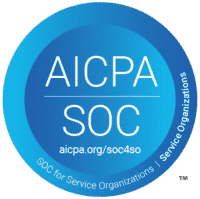Student data is a goldmine of information that can be leveraged to help educational institutions enroll more students, improve retention and alumni engagement. Despite the potential benefits, many continuing education institutions still face difficulties in effectively using data due to siloed systems and solutions.
Data siloed at different points in the student enrollment journey can lead to an incomplete picture of the student experience, hindering an institution’s ability to effectively target their enrollment and retention efforts.
Don’t have time to read the article? Scroll for the video below to see our EdTech specialist cover these topics!
Problems with traditional solutions
The main issue with student data is that it’s scattered across different points in the student enrollment journey, from event registration software, SIS and LMS to alumni databases. These systems usually do not communicate with each other well making it difficult to utilize the data to improve the student journey and have a complete overview of it.
The traditional solution to this problem is to rely on a single system to manage the entire process from admissions to alumni management. However, such systems likely do not deliver the complete value due to
- Complexity: They are difficult to maintain, making them a burden for the staff to effectively use and train others on them.
- Limited functionality: Single systems are typically designed to address a specific function and are not equipped to handle the diverse needs of an enrollment journey and alumni engagement. This results in a narrow scope that limits the ability of institutions to fully leverage student data to drive positive outcomes.
- Limited integrations: Single systems are not designed to integrate with other critical platforms such as CRM and accounting software. This results in a lack of seamless data flow between systems, increasing administrative burden and hindering a comprehensive view of students.
An alternative approach to traditional solutions
An alternative approach that will help to create a seamless data flow between platforms is an open system. This means instead of relying on one system, use a system architecture that integrates all of the different systems involved in the student journey, from admissions to graduation such as CRM software, LMS, and different accounting software. This way data can flow seamlessly between platforms, reducing administrative burden while also providing a 360-degree view of students.
This approach ultimately helps institutions enroll more students, retain them, and keep them engaged as alumni.
Looking for more ways to improve your continuing education? Schedule a virtual meeting with our specialist who can provide tailored advice on how your CE department can improve its operations based on the challenges you’re currently facing.



